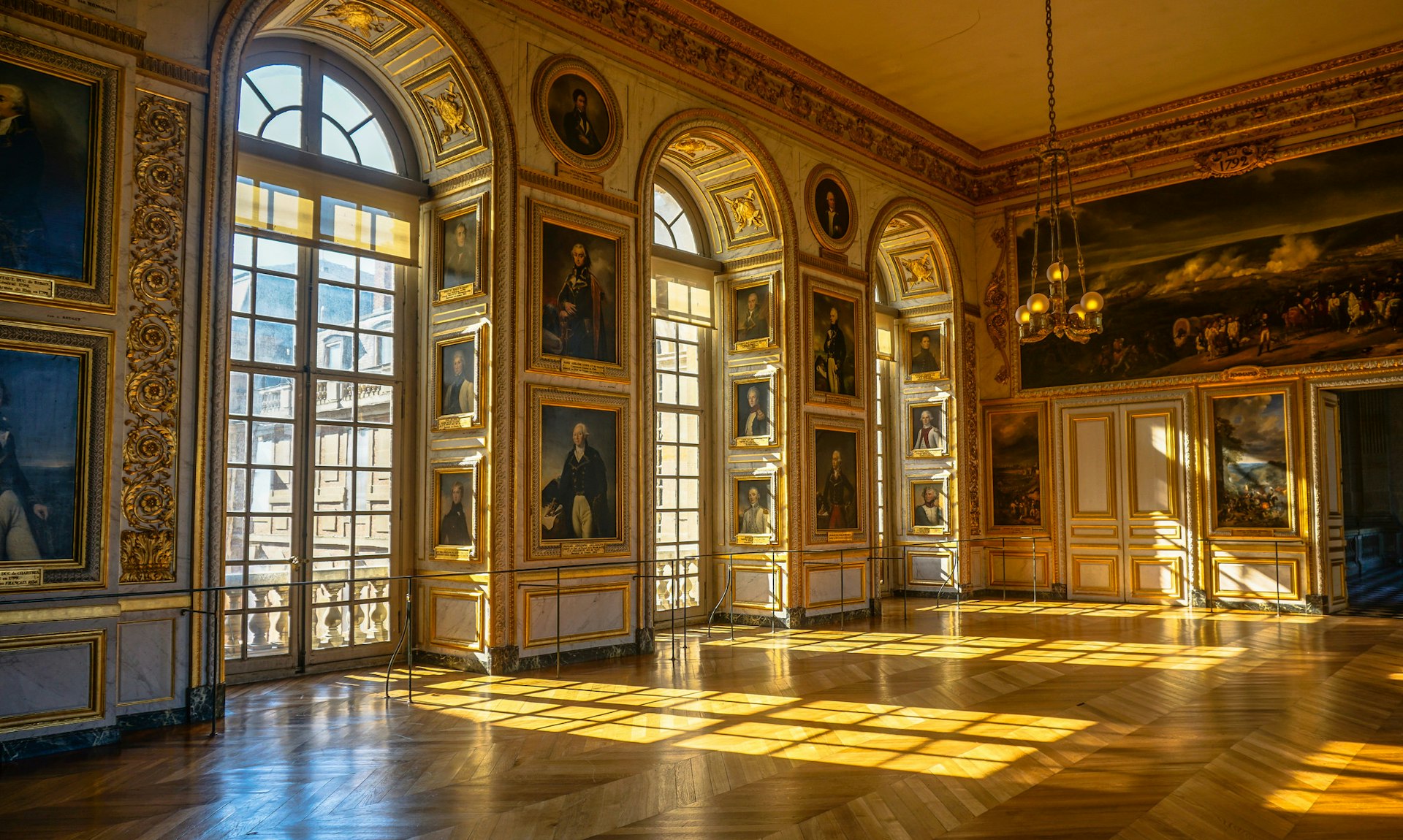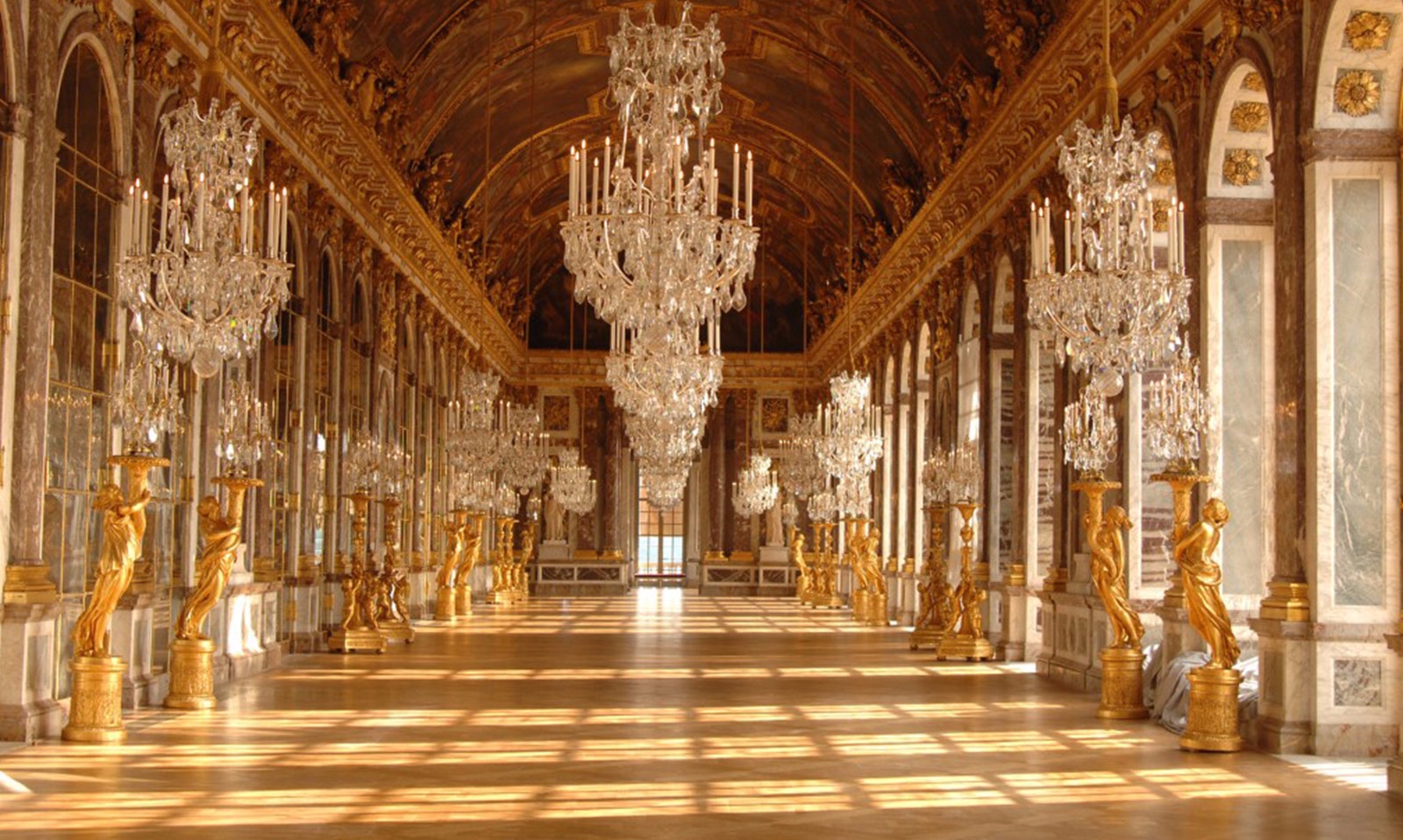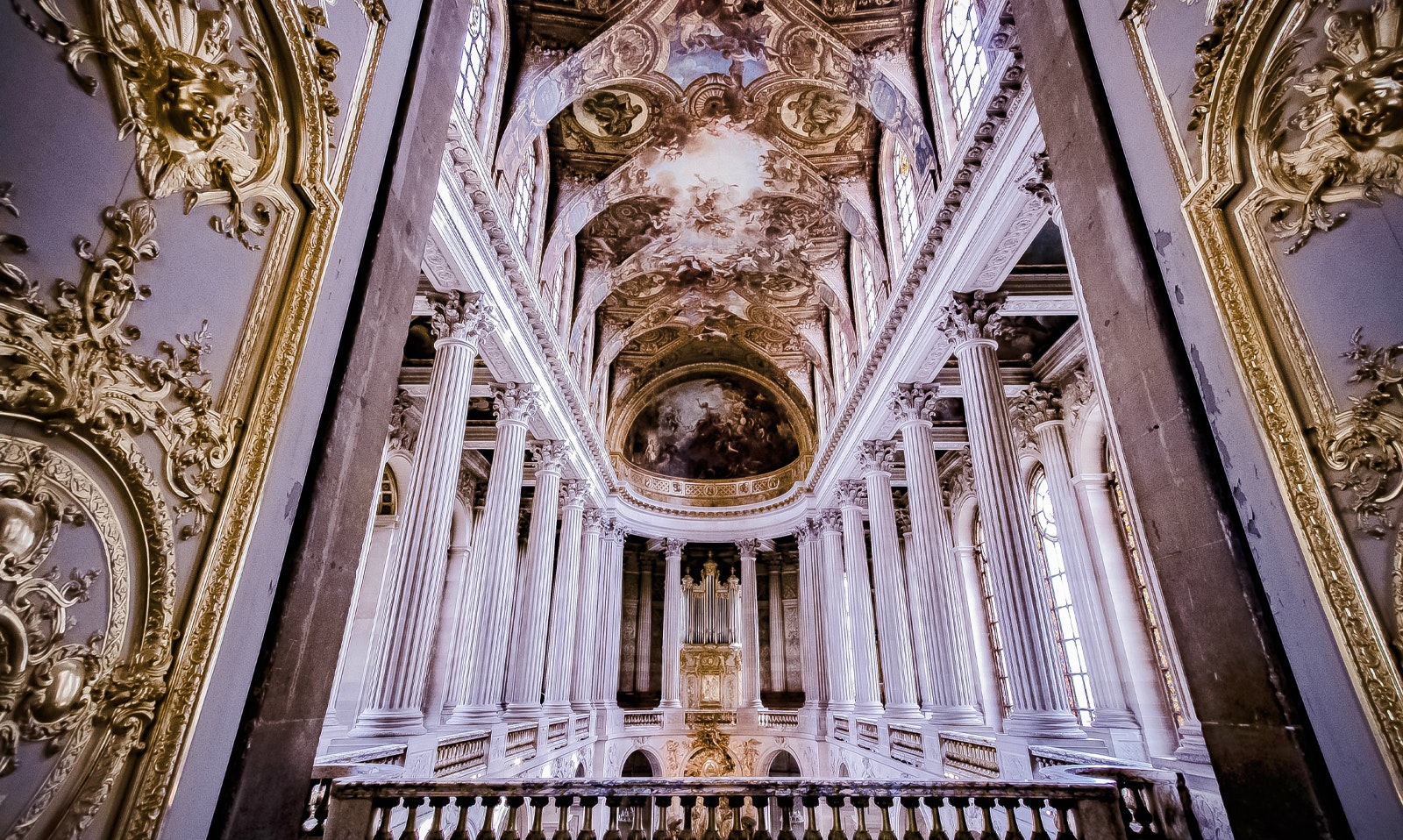The Hall of Mirrors, nestled within the magnificent Palace of Versailles, stands as a testament to royal grandeur and artistic brilliance. This iconic chamber, dating back to Louis XIV's reign in the late 17th century, is arguably the most famous room in a palace already renowned for its opulence.
As you step into this lavish gallery, you're immediately transported to an era of absolute monarchy and unparalleled luxury. The hall's design, a masterpiece of baroque extravagance, features intricate ceiling frescoes, ornate decorations, and the famous mirrors that give it its name. It's a must-see for history buffs, art enthusiasts, and anyone who appreciates a good dose of royal glamour.
Hall of Mirrors Versailles
When one thinks of the Palace of Versailles, one immediately thinks of ornate gardens, magnificent architecture, and exquisite decoration. If it had to be described in a word, it would be 'royal', because nothing says luxurious the way the Palace does. However, one of the most opulent parts of this extremely grandoise Palace is the Hall of Mirrors Versailles. Bedecked with mirrors throughout and overlooking the lush gardens of the palace, the Hall of Mirrors just cannot be missed when in Versailles!
What Makes The Hall of Mirrors Versailles Special

The Hall of Mirrors is the crown jewel of Versailles, embodying royal opulence and French artistry. Built between 1678-1684, this magnificent gallery replaced a terrace, transforming the palace's facade. Its 17 mirrored arches, facing an equal number of windows, create a dazzling play of light and reflection. With a whopping 357 mirrors, it's like the world's fanciest hall!
The hall's true magic lies in its vaulted ceiling, a masterpiece by Charles Le Brun. These paintings glorify Louis XIV's reign, showcasing his military and diplomatic triumphs. Talk about a king-sized ego boost! Overlooking the palace's lush gardens, this opulent chamber isn't just a feast for the eyes – it's a testament to France's economic and artistic prowess. No visit to Versailles is complete without marveling at this iconic space.
History of Hall of Mirrors
What was the Hall of Mirrors used for?
The Hall of Mirrors has been the stage for numerous royal spectacles and pivotal historical moments since its creation. This opulent gallery hosted lavish weddings, grand balls, and high-stakes diplomatic receptions. Notable events include the 1770 wedding of Louis XVI and Marie Antoinette, and the extravagant Yew Tree Ball of 1745, where Louis XV first encountered his future mistress, Madame de Pompadour. Beyond its aesthetic splendor, the hall served as a political canvas. Louis XIV utilized it to dazzle foreign dignitaries and assert France's dominance. The mirrors themselves were a testament to French craftsmanship, rivaling the renowned Venetian glassmakers.
Major historical events
The hall's legacy, however, isn't solely one of French triumph. On January 18, 1871, it witnessed a moment of national humiliation when Kaiser Wilhelm I was proclaimed Emperor of Germany within its walls following the Franco-Prussian War. Yet, history came full circle on June 28, 1919, as the Hall hosted the signing of the Treaty of Versailles, officially concluding World War I. This event symbolically dismantled the German Empire in the very room where it had been proclaimed, marking a significant shift in European power dynamics. Today, the Hall of Mirrors continues to captivate millions of visitors annually and remains a prestigious venue for official French Republic ceremonies.
The 43 chandeliers inside the Hall of Mirrors
The Hall of Mirrors boasts 43 stunning chandeliers - 17 large and 26 smaller ones - that create a dazzling light show. Originally crafted from solid silver to hold candles, these chandeliers screamed luxury fit for royalty. Around 1720, lead glass and crystal became the new bling, turning chandeliers into status symbols.
Louis XV's court inspired their design, and even Marie Antoinette's mom, Empress Maria Theresa, got in on the action with her own bead-and-drop adorned versions. Back in the day, candles lit up the hall with a cozy glow. Now, they're rocking electric lights but still keeping it classy.
These chandeliers aren't just for show - they're art pieces that amp up the Hall's wow factor, working with the 357 mirrors to bounce light everywhere.

Hall of Mirrors Versailles tickets
To understand the significance and history of the Hall of Mirrors, we recommend a Palace of Versailles tour with a historian guide. If you'd rather explore the Palace by yourself, here are the top recommended Palace of Versailles tickets.
Hall of Mirrors Versailles practical information
Open Hours and Timings
The Hall of Mirrors Versailles remains closed on Mondays. For rest of the week it opens at 9am, and closes at 5:30pm.
Getting There
It is very easy to get to the Versailles Palace from Paris:
Train: Line C of the RER regional train system from the centre of Paris (Champs de Mars, Invalides, Musée d'Orsay, etc.) to The Versailles Château Rive Gauche station. This just takes a 10 minute walk to the Palace from this station.
Bus: 171 of the RATP system runs between Pont de Sèvres and the Palace of Versailles.
Tips on visiting the Hall of Mirrors Versailles

- The best time to visit the Hall of Mirrors is ideally between mornings and afternoons, preferably on weekdays. This helps you beat the crowd and queues.
- While going to Versailles, don’t miss out on the infamous fountain shows. When the sun sets, the entire garden is illuminated with palace lights and the musical fountain show is simply stunning. Read our complete guide to the Gardens & Fountain Show at Versailles.
- Between June 17 and September 16, you can catch a special fountain show, with a firework display.
- There is a quite a bit of walking involved, so be sure to strap on a pair of comfortable footwear.
- Read our detailed guide on Palace of Versailles entrances and pick the right entrance for your visit.


